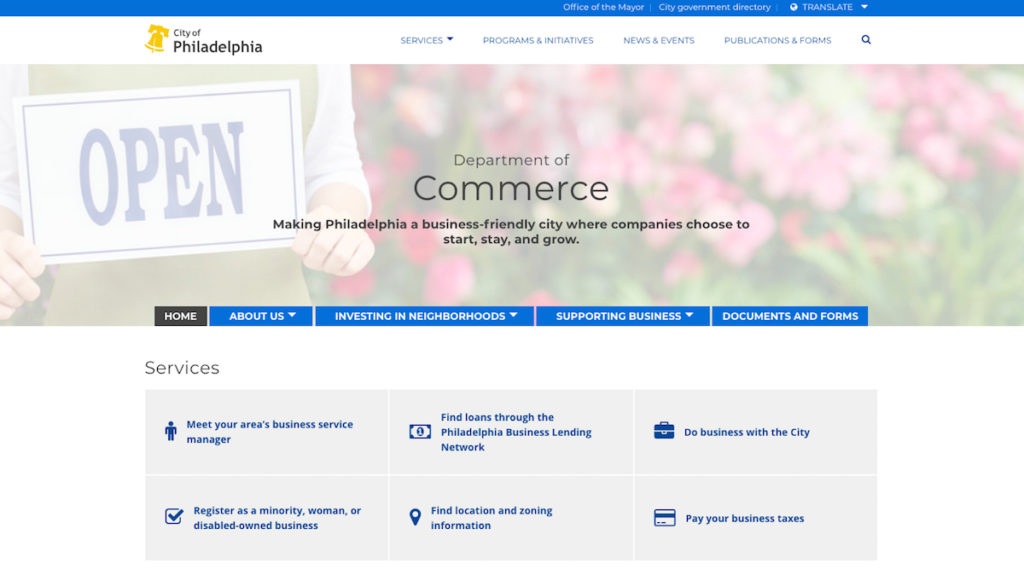Why it matters that the Commerce Department’s new website is easier to read
 October 15, 2018
Category: Featured, Medium, Results
October 15, 2018
Category: Featured, Medium, Results
The City of Philadelphia’s Office of Open Data and Digital Transformation (ODDT) has been working to update its website for the past several years for the sake of improved mobile usability, easier navigation and increased accessibility.
In August, phila.gov, which reportedly draws around 35,000 to 40,000 unique pageviews per day, finally emerged from beta mode.
Sara Hall, ODDT product manager and a leader in the site’s revamp, told Generocity is August that building an accessible website has been a meaningful way to help Philadelphians interact with local government in a useful way: “Civic tech closes the gap between residents and … their governments,” she said.
That doesn’t mean that every city department’s site within the larger portal is updated, though — Licenses and Inspections and Public Health, for instance, are still being migrated to the new platform.
Last week, the Department of Commerce’s marketing and digital communications manager, Taylor Farnsworth, tweeted that its site had finished its update process, with accessibility at the forefront:
I spent my summer working on the Department of Commerce's website. The content is now:
✔️At a lower reading level.
✔️More accessible through the City website's global navigation.
✔️Formatted beautifully thanks to the team at ODDT.
See it yourself: https://t.co/jjRJ8cuyCB https://t.co/2242ZdNvc7— Taylor Farnsworth (@tfarnsworth3) October 10, 2018
To understand why the lower reading level matters, it’s important to understand who would access the site in the first place.
Commerce connects entrepreneurs with their local business service managers, helps them pay their taxes and hosts programs such as Philadelphia Minority Enterprise Development Week. But it also oversees workforce development initiatives such as STEMcityPHL and the city’s sweeping Fueling Philadelphia’s Talent Pipeline plan.
In other words: Commerce caters to both employers, including those who may not speak English as their first language, and would-be employees, including those who are low-skilled. The language must be simple enough for a wide audience to understand, or it’s not meeting its mission.
The old site’s reading level was “somewhere around the 12th grade” or even post-graduate, Farnsworth said via email. Now, it’s between fourth and ninth grade. “As you look through the new website, you’ll see more bulleted lists, simple sentence structures, and easy-to-understand steps on how to take advantage of our programs. The designed product is user-friendly and can be accessed beautifully across platforms.”

The new Department of Commerce website. (Screenshot via phila.gov/departments/department-of-commerce)
The process of transitioning the department’s info to the new phila.gov happened in phases over about four months, beginning with a content inventory.
“The team at ODDT worked with us through interactive exercises to determine who our audience is, how each initiative should be classified, and if there are any gaps in our content,” Farnsworth said. “Once we established a hierarchy and consolidated necessary pages, we moved forward to begin content creation.”
As Commerce’s content lead, Farnsworth served as the go-between of its programs’ managers, who advised on what information should be included, and ODDT’s development team, senior Commerce staffers, the department’s communications director and the first deputy Commerce director.
“It was a very collaborative process to ensure that the information is accurate, transparent, and accessible,” she said.
Next up, ODDT is developing tools for increased cross-site navigability to other city departments that interact with business owners, such as L&I and health — the sites of which will also see revamps in the coming months.
Trending News









